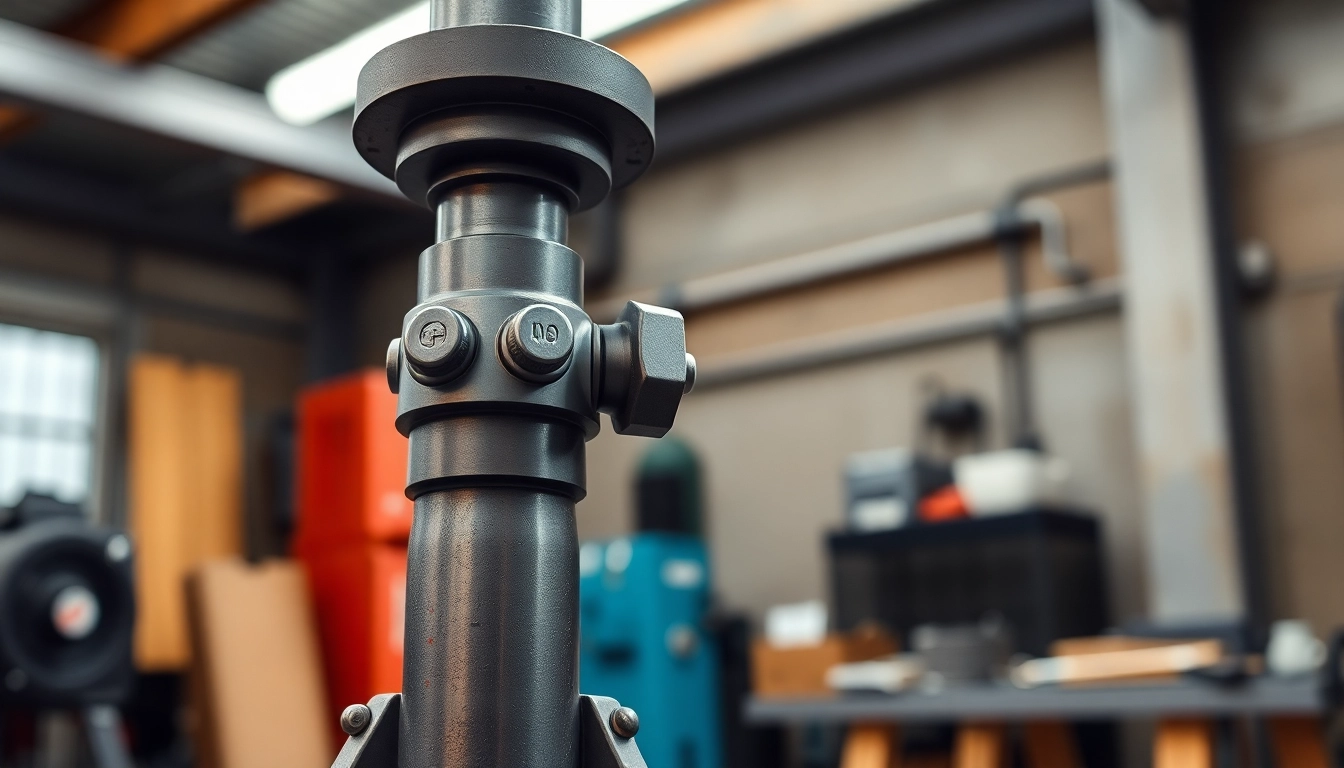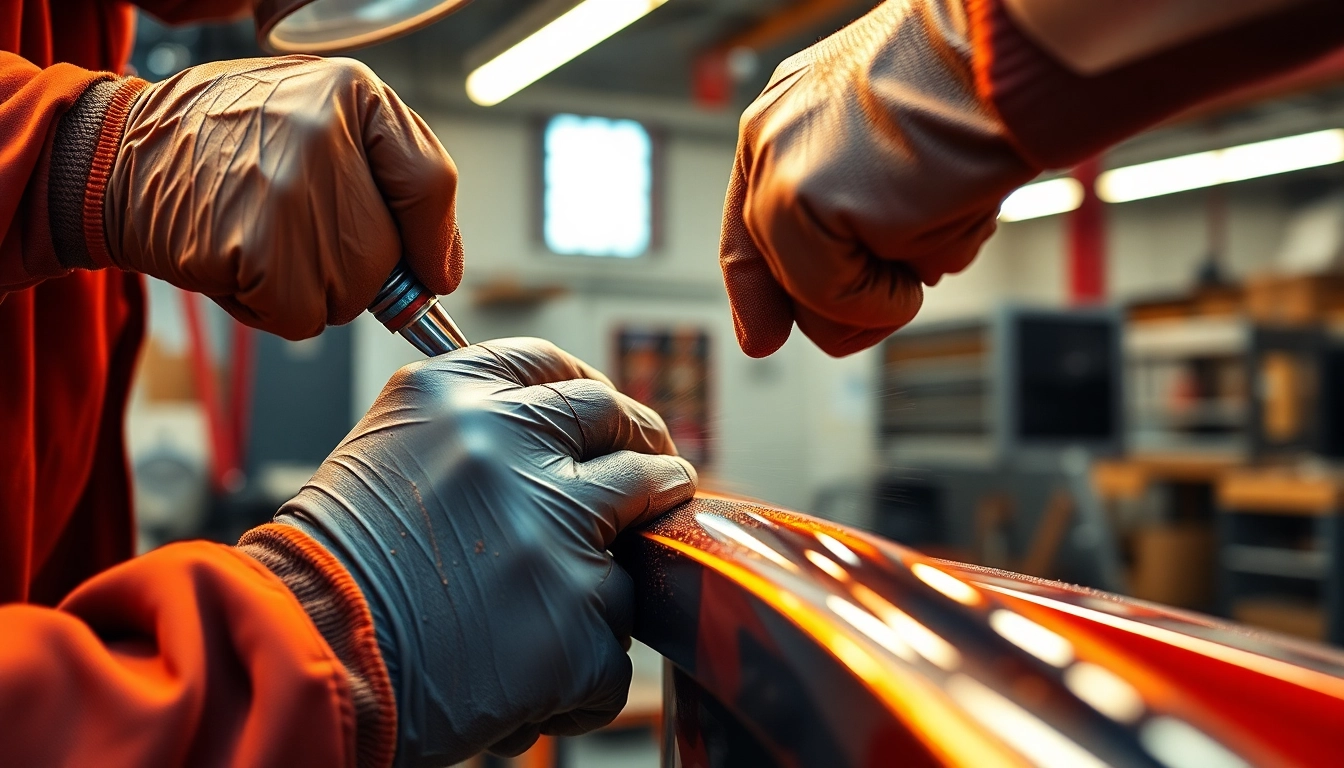Understanding Precision Die Cutting
Precision die cutting is a manufacturing process that transforms flat sheets or rolls of materials into custom shapes and sizes using specialized tools and machinery. It plays a crucial role in various industries, including packaging, automotive, electronics, and healthcare. With its capacity for high accuracy and repeatability, precision die cutting offers significant advantages over traditional cutting methods.
What is Precision Die Cutting?
At its core, precision die cutting is about creating complex shapes and designs from flat materials. The process utilizes sharp blades, often in the form of custom dies, to cut through the material at high speeds while ensuring minimum waste and maximum consistency. The equipment can handle a variety of materials, including paper, cardboard, plastics, rubber, and metals, tailored for specific applications. This precision also enables intricate designs, making it a favored choice for custom branding and picturesque cutouts.
The History of Die Cutting Technology
Die cutting technology has evolved significantly since its inception. The earliest forms of die cutting involved hand-operated tools and rudimentary cutting techniques, often leading to inconsistencies and high labor costs. As industrialization took hold, the need for faster and more accurate cutting methods led to the development of mechanical die-cutting machines in the late 19th century. The introduction of hydraulic and electric-powered machines further revolutionized the industry, allowing for greater speed and efficiency. In recent years, advancements in computer technology and automation have provided even more tools for precision die cutting, including laser and rotary cutting techniques that are reshaping modern manufacturing.
Key Materials Used in Precision Die Cutting
The selection of materials suitable for precision die cutting is critical to achieving optimal results. Each material brings unique properties that can influence the die cutting process:
- Paper and Cardboard: Widely used in packaging and print applications due to their ease of cutting and flexibility.
- Foam: Common in protective packaging and insulation, foam materials require specialized dies to cut through without crushing.
- Plastics: Versatile and durable, plastic sheets are used in various industries, with die cutting allowing for complex shapes and packaging components.
- Rubber: Used for gaskets and seals, rubber die cutting demands high precision to ensure proper fit and function.
- Metal: Precision die cutting enables the creation of intricate components for automotive and machinery applications.
Benefits of Precision Die Cutting
Superior Accuracy and Consistency
One of the primary advantages of precision die cutting is its high level of accuracy. Modern die-cutting techniques can achieve tolerances as tight as ±0.005 inches, essential for industries where precision is paramount. This level of detail promotes uniformity across production runs, which is crucial for branding consistency and product functionality.
Cost-Effectiveness of Precision Die Cutting
While the initial setup cost for creating custom dies can be significant, precision die cutting can lead to lower costs per unit as production scales. This method minimizes waste and reduces labor costs due to automated technology. The ability to produce intricate designs efficiently often outweighs the setup costs, making it a financially viable option for many projects.
Applications Across Various Industries
Precision die cutting finds application in numerous fields, each benefiting from its unique capabilities:
- Packaging: Used extensively in food packaging, retail product packaging, and custom boxes, ensuring products are well-protected and visually appealing.
- Medical: Vital in producing parts such as surgical drapes, bandages, and catheter components, all of which require high levels of hygiene and accuracy.
- Automotive: Utilized for gaskets, insulation, and interior components where tight tolerances and durability are required.
- Electronics: Used in the production of components such as circuit boards and housings, where precise cuts ensure functionality and safety.
Types of Precision Die Cutting Methods
Rotary Die Cutting Explained
Rotary die cutting involves the use of a cylindrical die that rotates to cut the material as it passes through. This method is fast and suitable for high-volume production runs, producing clean cuts with minimal waste. It’s particularly effective for continuous rolls of material, making it ideal for packaging and labels.
Flatbed Die Cutting: Pros and Cons
Flatbed die cutting uses a flat surface where a hydraulic press pushes a die down onto the material. This method is versatile and can handle thicker materials compared to rotary die cutting. However, it can be slower and less efficient for high-volume applications. The key benefits include precise cuts and the ability to handle a variety of substrates, while drawbacks include longer setup times and more material waste.
Laser Die Cutting Technology
Laser die cutting employs high-powered lasers to cut materials with extreme precision. This technology allows for intricate designs and can work on a wider range of materials, including those that might be too delicate for traditional die cutting. Advantages include the ability to create complex shapes, low material waste, and rapid adjustments during the design process. However, the cost of equipment and maintenance can be higher than conventional methods.
Choosing the Right Precision Die Cutting Service
Factors to Consider When Selecting a Provider
Choosing the right precision die cutting service involves evaluating several key factors:
- Experience: Look for providers with a proven track record in the specific materials and applications relevant to your needs.
- Technology: Ensure the service uses up-to-date machinery and techniques that can deliver the precision required for your project.
- Quality Control: Investigate the quality assurance practices in place to maintain consistent output across production runs.
- Customer Support: A responsive provider can significantly ease the process of design adjustments and troubleshooting.
How to Evaluate Quality and Performance
Evaluating the quality of a precision die cutting service involves looking at various performance metrics, including:
- Tolerances: Confirm the standard tolerances the service offers and ensure they meet your project’s specifications.
- Production Speed: Consider the turnaround time for initial prototypes and full production runs.
- Material Compatibility: Check if the service can efficiently work with all materials you plan to use.
- Customer Reviews: Seek testimonials or case studies to assess the satisfaction levels of past clients.
Common Questions About Precision Die Cutting Services
Prospective clients often have questions that can help clarify the capabilities and expectations of die cutting services:
- What are the tolerances for die cutting? Typical tolerances can be around ±0.005 inches for steel rule dies, influencing the overall short-term and long-term design.
- How much does die cutting cost? The average cost per job can start around $250, varying based on design complexity and material choice.
- What types of materials can be used? Various materials can be die-cut, including paper, plastic, rubber, and metals, each requiring specific techniques for optimal results.
Future Trends in Precision Die Cutting
Innovations Driving the Industry Forward
The precision die cutting industry is set to experience significant innovations as technology continues to evolve. The incorporation of artificial intelligence and machine learning is expected to improve design processes, enhance quality control, and optimize production efficiency. Automation in manufacturing will further allow for faster turnaround times, making precision die cutting more accessible and economical.
Sustainability in Die Cutting Practices
With the growing emphasis on sustainable manufacturing practices, precision die cutting is adapting to meet this demand. Companies are exploring eco-friendly materials and technologies that minimize energy consumption and reduce waste. These practices not only improve corporate social responsibility but also resonate with environmentally-conscious consumers.
Predictions for the Next Decade
Looking ahead, it is anticipated that precision die cutting will expand significantly into new markets, particularly in smart packaging and custom manufacturing solutions. As consumer preferences shift towards personalization and sustainability, businesses in various sectors will increasingly rely on precision die cutting to meet these expectations. Furthermore, the integration of smart technologies with die cutting processes will likely streamline operations and improve product lifecycle management.


